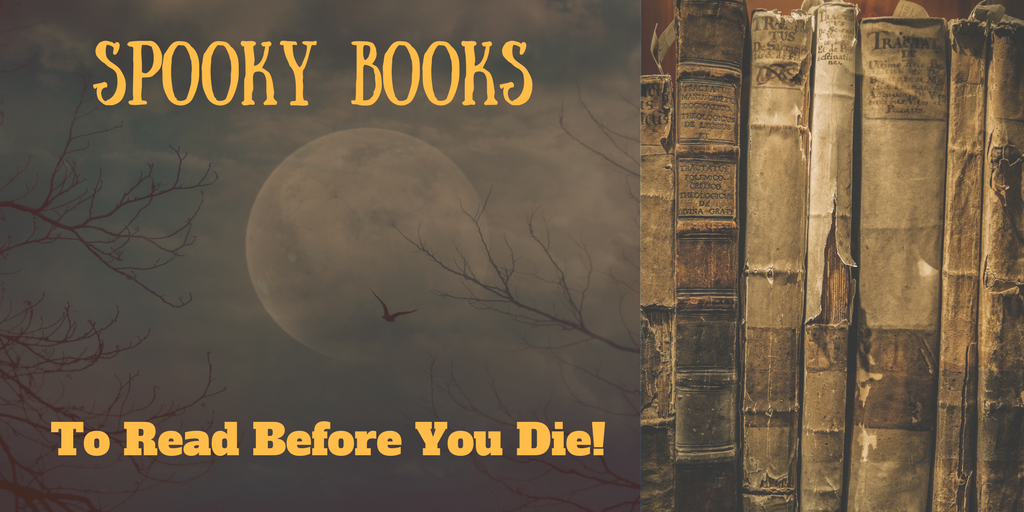Halloween may conjure up thoughts of ghost stories, horror movies, and chilling tales, but nothing can compare to how truly bizarre and intriguing nature can be. What could be more peculiar, more frightening, than the strange and ghastly realities stories found in the natural world all around us?
There’s a plethora of literature to be found on spooky nature facts, from books on poisonous plants and deadly animals to strange science and lethal diseases. Click below and add some of these creepy real life tales to your autumn night reading.
Frightful Flora:
- Wicked Plants: The Weed That Killed Lincoln’s Mother and Other Botanical Atrocities by Amy Stewart, 2009
“A tree that sheds poison daggers; a glistening red seed that stops the heart; a shrub that causes paralysis; a vine that strangles; and a leaf that triggered a war.”
- The Savage Garden, Revised: Cultivating Carnivorous Plants by Peter D’Amato, 2013
“You may be familiar with the Venus flytrap, but did you know that some pitcher plants can—and do—digest an entire rat?”
“Organized alphabetically, The Big, Bad Book of Botany combines the latest in biological information with bizarre facts about the plant kingdom’s oddest members, including a species that is more poisonous than a cobra and a prehistoric plant that actually “walked.””
- Poison: Sinister Species with Deadly Consequences (American Museum of Natural History) by Dr. Mark 2014
“Beware: it’s a poisonous world—and this is the ultimate guide to surviving nature at her most toxic!”
Fierce Fauna:
“Now, in The Big, Bad Book of Beasts, award-winning author Michael Largo has updated the medieval bestsellers for the twenty-first century, illuminating little-known facts, astonishing secrets, and bizarre superstitions about the beasts that inhabit our world—and haunt our imaginations.”
- Wicked Bugs: The Louse That Conquered Napoleon’s Army & Other Diabolical Insects by Amy Stewart, 2011
“In this darkly comical look at the sinister side of our relationship with the natural world,
Stewart has tracked down over one hundred of our worst entomological foes―creatures
that infest, infect, and generally wreak havoc on human affairs.”
Fascinating Forensics:
“Along the way, we discover how maggots collected from a corpse can help determine time of death; how a DNA trace a millionth the size of a grain of salt can be used to convict a killer; and how a team of young Argentine scientists led by a maverick American anthropologist were able to uncover the victims of a genocide.”
- Silent Witnesses: The Often Gruesome but Always Fascinating History of Forensic Science by Nigel McCrery, 2014
“Landmark crime investigations examined in depth include a notorious murder involving blood evidence and defended by F. Lee Bailey, the seminal 1936 murder that demonstrated the usefulness of the microscope in examining trace evidence, the 1849 murder of a wealthy Boston businessman that demonstrated how difficult it is to successfully dispose of a corpse, and many others.”
- The Poisoner’s Handbook: Murder and the Birth of Forensic Medicine in Jazz Age New York by Deborah Blum, 2011
“A fascinating Jazz Age tale of chemistry and detection, poison and murder, The Poisoner’s Handbook is a page-turning account of a forgotten era.”
“In this fascinating account, Mary Roach visits the good deeds of cadavers over the centuries and tells the engrossing story of our bodies when we are no longer with them.”
Deadly Diseases:
“Combining tales of devastating epidemics with accessible science and fascinating history, Deadly Companions reveals how closely microbes have evolved with us over the millennia, shaping human civilization through infection, disease, and deadly pandemic.”
“In this critically acclaimed exploration, journalist Bill Wasik and veterinarian Monica Murphy chart four thousand years of the history, science, and cultural mythology of rabies.”
“In this astonishing book, Ed Yong takes us on a grand tour through our microbial partners, and introduces us to the scientists on the front lines of discovery.”
Spooky Science:
“A riveting exposé of the fierce debates, deadly politics, and cutthroat rivalries behind the first transfusion experiments, Blood Work takes us from dissection rooms in palaces to the streets of Paris, providing an unforgettable portrait of an era that wrestled with the same questions about morality and experimentation that haunt medical science today.”
“In an attempt to find out, Mary Roach brings her tireless curiosity to bear on an array of contemporary and historical soul-searchers: scientists, schemers, engineers, mediums, all trying to prove (or disprove) that life goes on after we die.”

